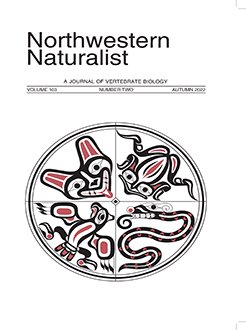With global climate change and increasing ocean-based human activities, large whales face novel challenges in the Arctic seas. Understanding and assessing large whale occurrence and the links between occurrence and environmental variables in this region is a key issue in current management and conservation strategies for Arctic marine mammal species. During the Chukchi Sea Environmental Studies Program, large whale occurrence data were collected from vessel surveys during >56,909 km of observation effort in summer and autumn, 2008 to 2014, in the northeastern Chukchi, southern Beaufort, and Bering Seas. The most-recorded species were the Bowhead (Balaena mysticetus) and Gray (Eschrichtius robustus) Whales. Subarctic species recorded included the Humpback Whale (Megaptera novaeangliae), Fin Whale (Balaenoptera physalus), and Minke Whale (Balaenoptera acutorostrata). Sightings data were analyzed with respect to environmental variables: sea-surface temperature (SST), depth (m), and distance from shore (km), by month and year. Investigating occurrence associations with environmental parameters is a key element for predicting large whale trends in these Arctic seas and for understanding marine mammals as sentinels of oceanic shifts.
How to translate text using browser tools
1 August 2022
LARGE WHALE OCCURRENCE IN NORTHEASTERN CHUKCHI AND SOUTHERN BEAUFORT SEAS FROM VESSEL SURVEYS, 2008–2014
Kate Lomac-MacNair,
Sheyna Wisdom,
José Pedro de Andrade,
Julia Stepanuk,
Maren Anderson,
Ann Zoidis,
Eduardo Esteves
ACCESS THE FULL ARTICLE

Northwestern Naturalist
Vol. 103 • No. 2
Autumn 2022
Vol. 103 • No. 2
Autumn 2022
Beaufort Sea
bowhead whale
Chukchi Sea
Gray Whale
habitat
sea surface temperature
subarctic species




